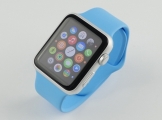|
我有一个非常基本的示例,我正在将一些数据从 JSON 读取到一个类中,并且我的对象正在以某种方式损坏。我怀疑我遗漏了有关属性/ARC 工作方式的一些细节,但我不确定它是什么,或者我将如何追踪它。
我已经减少了我的原始代码,这样问题就很明显了。然而,这意味着不清楚我为什么要使用自定义属性等 - 我的真实代码在那里有更多功能......
这个问题可以在 Test.m 文件的最后一行看到。第一个构造的对象现在包含来自第二个对象的数据,而不是它最初包含的值。
任何关于我做错了什么和/或如何追查此类问题的建议将不胜感激。
ANBNote.h
@interface ANBNote : NSObject
@property (nonatomic,readwrite) NSArray* references;
- (id)initWithJson NSDictionary*)data;
@end NSDictionary*)data;
@end
ANBNote.m
#import "ANBNote.h"
@implementation ANBNote
NSArray * _references;
-(id) init {
if(!(self=[super init])) return nil;
_references=@[];
return self;
}
-(id)initWithJson NSDictionary *)jsonObject {
if(!(self = [self init] ) ) { return nil; }
_references = jsonObject[@"references"];
return self;
}
-(void) setReferences NSDictionary *)jsonObject {
if(!(self = [self init] ) ) { return nil; }
_references = jsonObject[@"references"];
return self;
}
-(void) setReferences NSArray *)references {
_references = references;
}
-(NSArray *)references {
return _references;
}
@end NSArray *)references {
_references = references;
}
-(NSArray *)references {
return _references;
}
@end
Test.m
...
NSDictionary * d1 = @{@"references" [@"r1",@"r2"]};
NSDictionary * d2 = @{@"references" [@"r1",@"r2"]};
NSDictionary * d2 = @{@"references" [@"q1",@"q2"]};
ANBNote * n1 = [[ANBNote alloc] initWithJson:d1];
NSLog(@"R1 = %p, %@", n1.references, n1.references); // Prints r1, r2 - as expected
ANBNote * n2 = [[ANBNote alloc] initWithJson:d2];
NSLog(@"R2 = %p, %@", n2.references, n2.references); // Prints q1, q2 - as expected
NSLog(@"R1 = %p, %@", n1.references, n1.references); // Prints q1, q2 - Oh No! [@"q1",@"q2"]};
ANBNote * n1 = [[ANBNote alloc] initWithJson:d1];
NSLog(@"R1 = %p, %@", n1.references, n1.references); // Prints r1, r2 - as expected
ANBNote * n2 = [[ANBNote alloc] initWithJson:d2];
NSLog(@"R2 = %p, %@", n2.references, n2.references); // Prints q1, q2 - as expected
NSLog(@"R1 = %p, %@", n1.references, n1.references); // Prints q1, q2 - Oh No!
请注意,如果我删除自定义引用属性函数并依赖编译器生成的版本,一切似乎都正常运行。
Best Answer-推荐答案
这不是 ivar:
@implementation ANBNote
NSArray * _references;
这是一个全局性的。您的类的所有实例只有一个,而不是每个实例一个。当下一个实例设置它时,前面的实例会看到新值,因为它是同一个变量。您需要将其放入花括号中以使其成为 ivar:
@implementation ANBNote
{
NSArray * _references;
}
不过,无需显式声明变量——您仍然可以自己实现访问器,并让编译器创建 ivar,只要您使用默认的合成名称(下划线 + 属性名称)。
关于ios - 为什么我的对象会发生意外变化?,我们在Stack Overflow上找到一个类似的问题:
https://stackoverflow.com/questions/18285624/
|  客服电话
客服电话
 APP下载
APP下载

 官方微信
官方微信
















 NSDictionary*)data;
@end
NSDictionary*)data;
@end
 [@"r1",@"r2"]};
NSDictionary * d2 = @{@"references"
[@"r1",@"r2"]};
NSDictionary * d2 = @{@"references"
